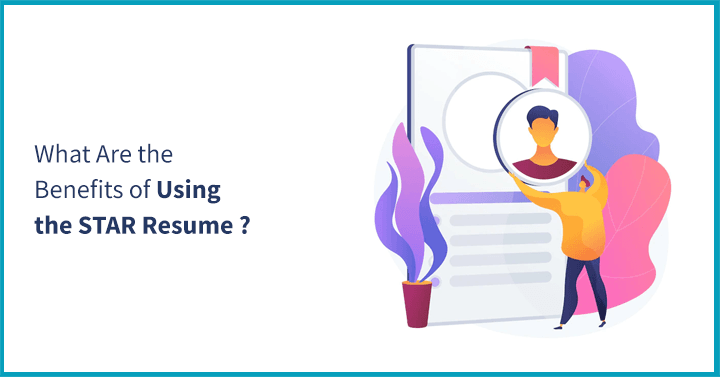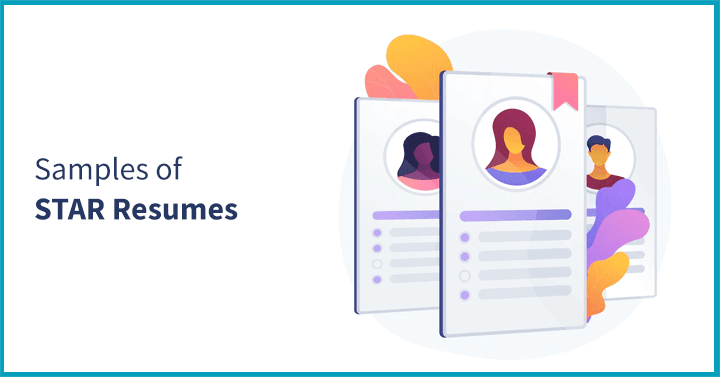1. What is the STAR Method?
The STAR method is a handy tool to create attention-grabbing applications. It was specifically developed to help individuals systematically answer common interview questions, but can readily be adapted to the resume writing process. The concept should enable any candidate to craft their catalog of achievements into a digestible summary, providing a framework that helps to logically express your skills and experience in the most appealing way possible for potential employers.
2. What Are the 4 Components of STAR?
What are STAR statements? STAR stands for situation, task, action, and results. Using this acronym, you should be able to cogently construct compelling arguments for why you are the best candidate for any role.
2.1 Situation
With a general job description in mind, reflect on your work experience. What situations could you use to address a particular skill desired by the employer?
2.2 Task
In the highlighted situation, what tasks or objectives were you required to achieve? You need to be as clear as possible when contextualizing the challenge.
2.3 Action
Once you’ve described the situation and pinpointed the task, the next stage is to explain the action (or actions) that you took to address the situation and task. What proactive things did you do?
2.4 Results
After you assessed the situation and task, then implemented appropriate action, what was the result? Remember that in most cases only positive results are worth including on your resume.
3. What Are the Benefits of Using the STAR Resume?

When applicants question why is the STAR method for CV important, the most obvious answer is that it imposes format. It’s all too easy to slip into a flavorless recitation of job history without properly considering what each part of your experience actually offers to a future employer. Always bear in mind that your CV is not just a lifeless document of things you’ve done, but is actually a way to sell your qualifications to any potential employer, engaging them with your distinctive attributes.
It also means that when you’re asked questions like “what can you contribute to our company” or “tell us what makes you unique” that you can readily formulate intelligent responses because you’ve already laid the groundwork with your STAR resume and examples of the situations, tasks, actions and results of each previous job. The methodology makes it much easier to think through how each point of your resume actually translates into benefits to future employers. This will save you a lot of time and effort later on.
4. How Do You Create a Resume Using the STAR Method?
Rather than just listing your employment history, think about how each point advances your job application. Try and reframe your mode of thinking, so instead of saying something like “I did this,” you contextualize generally what was required (e.g., management of a team of software developers), explain what your milestones were (e.g., to develop new features for the company’s flagship solution), then explain what you undertook to meet those milestones (e.g., created a more intuitive interface) and, finally, show how this approach was successful (e.g., as a result, the product was more popular with customers and sales increased).
4.1 Situation: Your Job, Challenge, Role, or Other Context
Hopefully, you’ll be applying to jobs where your past experience is relevant. Set the scene by expressing the goals and direction your previous companies wanted to move towards. For instance, perhaps they wanted to build web traffic, improve their user journey or increase sales.
4.2 Task: Demonstrating Your Competencies Through Defined Problem-Solving
In some instances, there may have been detailed objectives referenced when you joined a company. In others, there may have been more flexibility in the route you undertook to achieve a more general goal. Either way, the exact task that was expected of you should be expressed, in order to further contextualize what your role was.
4.3 Action: Showcasing Your Ability to Make Things Happen
You’ve succinctly summarized the company’s overarching situation and the task that needed to be achieved. Now, you need to show how your qualifications and skills were utilized to actually address what the business hired you to do. What strategies did you employ? Were there any technical abilities you brought to bear? Hard skills and soft skills are equally important here, so make sure you specify both.
4.4 Result: Achieving Your Goals and Adding Value
As mentioned above, there’s no point in bringing up things unless you can concretely demonstrate your ability to meet the targets set by the company. Quantifiable results are always impressive and, in most cases, preferable. However, in some situations, this may note be possible, but you can still showcase your success. For instance, even if you can’t say, “I increased sales by 20%”, you can at least say, “My approach helped the business to meet its stated quality of care goals.”
5. Samples of STAR Resumes

Now you understand the principles of STAR, but how do you use the star approach in practice? Here are some STAR statement examples, with the different parts of the STAR resume and great resume examples highlighted in brackets.
5.1 STAR Resume for Experienced Candidate
This STAR resume sample presumes a long history of experience in industry, neatly summarized in a few STAR resume bullets.
John Smith
000-000-0000
johnsmith@gmail.com
Experience
Chief Technology Officer 2015-Present
Blue Man Group
- Oversaw the management of the company’s technology assets to optimize investment in upgrading the business’ tech stack (situation and task)
- Ran a project to implement a full cloud migration for the company’s data (action)
- Reduced infrastructure costs by reducing on-premise resources (result)
Chief Technology Office 2010-2015
Risk Management Associates
- Managed the security for a software development firm (situation)
- Required to be constantly on top of new threat assessment tools (task)
- Refreshed the company’s approach to information security by implementing new security measures, leading to increased customer satisfaction and peace of mind (action and result)
5.2 STAR Resume for Freshers
Your STAR resume and examples of previous experience will be limited as a fresh graduate, but it’s still possible to utilize it effectively.
John Smith
000-000-0000
johnsmith@gmail.com
Experience
Editorial Internship
Life Magazine
- Aided with the proofing of articles in the fashion section of the magazine (situation)
- Used AP style to ensure standard format throughout (task)
- Worked alongside senior staff to implement corrections and improve the quality of the content (action and result)
5.3 STAR Resume for a Customer Service Role
The STAR resume and examples of your past employment successes can be easily adapted for any industry, from tech to customer service.
John Smith
000-000-0000
johnsmith@gmail.com
Experience
Customer Service Representative 2020-Present
AXA Insurance
- Worked as part of the car insurance department of AXA Insurance (situation)
- Responded to customer inquiries regarding their coverage and logged any complaints (task)
- Helped customers to find resolutions to any issues they had with the service (action)
- Achieved a quality assurance rating of 100% in consecutive annual reviews (result)
5.4 STAR Resume for a Sales Role
Some jobs lend themselves more readily to quantifiable results. Try to include figures wherever possible.
John Smith
000-000-0000
johnsmith@gmail.com
Experience
Head of Sales 2019-Present
Billboards Are Us
- Ran a sales team of 10 sales representatives to sell billboards in a prominent downtown area (situation)
- Tasked with growing revenues by 10% (task)
- Created a fresh strategic approach for the sales team to optimize the successful conversion of potential clients into actual clients (action)
- Consistently exceeded growth targets by between 5% and 10%
6. FAQs
6.1 Why does the STAR method work for resumes?
Using the STAR method for CV can help you achieve a number of things. First, it shows what added value you can bring to a potential employer in a nice, clear, bullet-pointed format. Second, it’s a systematic way of thinking about how to describe your previous experience. Third, it functions as a form of interview preparation: by crafting the STAR method resume examples of what you’ve achieved, you’ll already have established the groundwork for the behavioral questions that will inevitably arise when your application progresses further. One of the most important things to keep in mind is that your resume should tell a story to hire managers so that they can clearly visualize your career journey and how the experiences you’ve had and skills you’ve developed might benefit their business.
 Interested in Virtual Team Building Events?
Interested in Virtual Team Building Events?





















